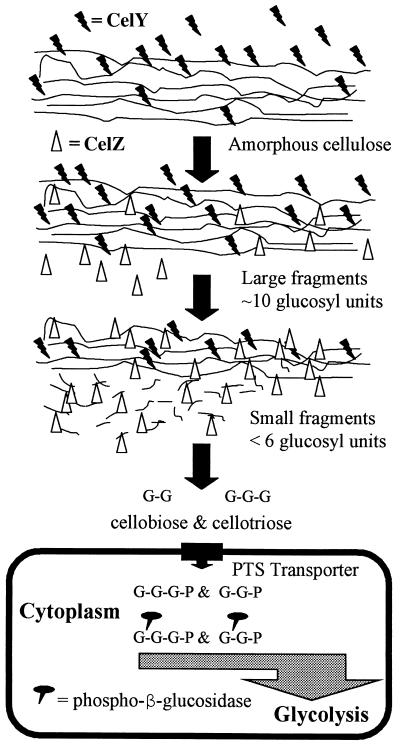FIG. 4.
Model illustrating the utilization of amorphous cellulose by E. chrysanthemi. Three glucosidases are used for the catabolism of amorphous cellulose. Two of these, CelY and CelZ, are extracellular endoglucanases which function together in a synergistic fashion. CelY requires large substrate molecules and hydrolyzes these into shorter, insoluble fragments. CelY does not hydrolyze soluble cellooligosaccharides (2 to 5 glucosyl residues). CelZ readily hydrolyzes soluble cellooligosaccharides (cellopentaose and cellotetraose) and amorphous fragments of intermediate lengths to produce cellobiose and cellotriose. Cellobiose (G-G) and cellotriose (G-G-G) are phosphorylated (P) during cellular uptake by a phosphoenolpyruvate-dependent phosphotransferase system (PTS). Hydrolysis is completed intracellularly by a third enzyme, phospho-β-glucosidase. Resulting monomeric products (glucose and glucose-6-phosphate) are metabolized by glycolysis.

